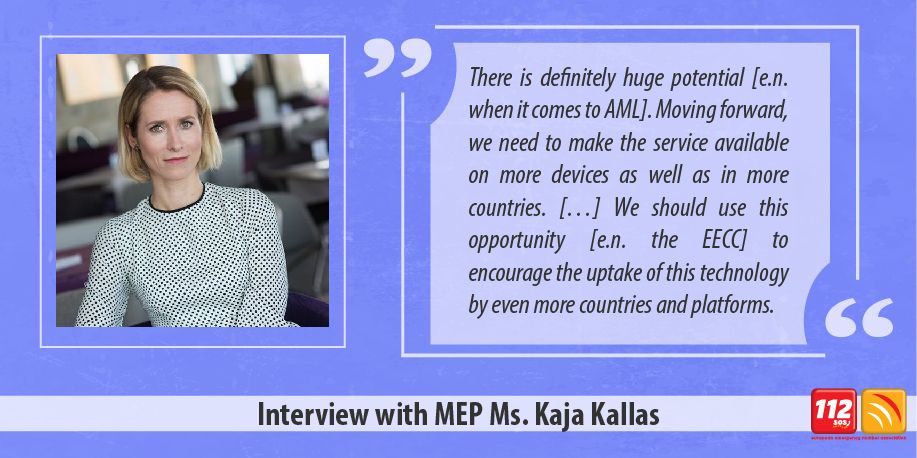SHORT INTERVIEW RELATED TO MS. KALLAS’ VISIT TO THE ESTONIAN EMERGENCY RESPONSE CENTRE

On 22 December 2016, Ms. Kaja Kallas, Estonian Member of the European Parliament, visited the Emergency Response Centre (ERC) in Tallinn. Together with the emergency services staff, they discussed about topics including Advanced Mobile Location, the emergency number 112, and more…
Benoit Vivier, EENA Advocacy Officer, had a discussion with Ms. Kallas regarding her experience:
BV: You visited the 112 Emergency Response Centre in Tallinn in December. What have you learnt during your visit? What were the main highlights?
KK: First of all, I have to say I have great respect for the workers of the Emergency Centre. They are the first contact with the victim and the responsibility for lives is often on their shoulders.
I had the chance to observe how the Centre works and learnt a lot about its functioning. Estonia has 4 call centres in different cities – a very important step in order to spread out risks. For example, if there should be a fire in one of the call centres, the others can take over their calls.
One of the highlights was the interactive map, that is unique in the world and shows in real time all emergency calls, cars and help. It currently works for ambulances and fire brigades, but the police will be added soon. The map shows a live feed of calls coming in (landline or mobile indicated), incidents created (waiting for response unit to be assigned, waiting for response unit to arrive, and so on), cars in service (free, travelling to incident, travelling to hospital, and so on).
BV: Estonia was the first country in the world to fully deploy Advanced Mobile Location last June. What potential do you see for AML being deployed in the rest of Europe?
KK: There is definitely huge potential, and around a dozen countries have expressed their interest up to now. Ideally, all EU member states should join. Every country has the capacity to use AML, they just have to activate it. In Estonia, 30% of calls are now located using AML. In some cases, this has significantly increased the accuracy of the positioning. Moving forward, we need to make the service available on more devices as well as in more countries. Currently, AML only works on Android devices*. To increase the number of people who can benefit from it, we should make sure that it works on all smartphones.
Though AML is sometimes associated with concerns over privacy, I do not think that there is much cause for concern. AML is activated only when a person dials 112. A message with their static location is sent to 112 at the same time the call comes in. 112 cannot track the caller’s movement during or after the call. And most importantly, no one ever asks “why do you know where I am?” when they call 112 and need help immediately.
BV: The proposal for a European Electronic Communications Code includes provisions on emergency communications. Following your visit, is there anything you would like to improve in the functioning of 112 through this legislation?
KK: We should use this opportunity to encourage the uptake of this technology by even more countries and platforms.
* Please note that Android Emergency Location (AEL) is the Advanced Mobile Location (AML) solution for Android phones. Google launched AEL in July 2017.
Find out more on the RELATED PRESS RELEASES sidebar.
We would like to thank Ms. Kaja Kallas for her time and discussions, as well as for her demonstrated interest in emergency services and citizens safety.
